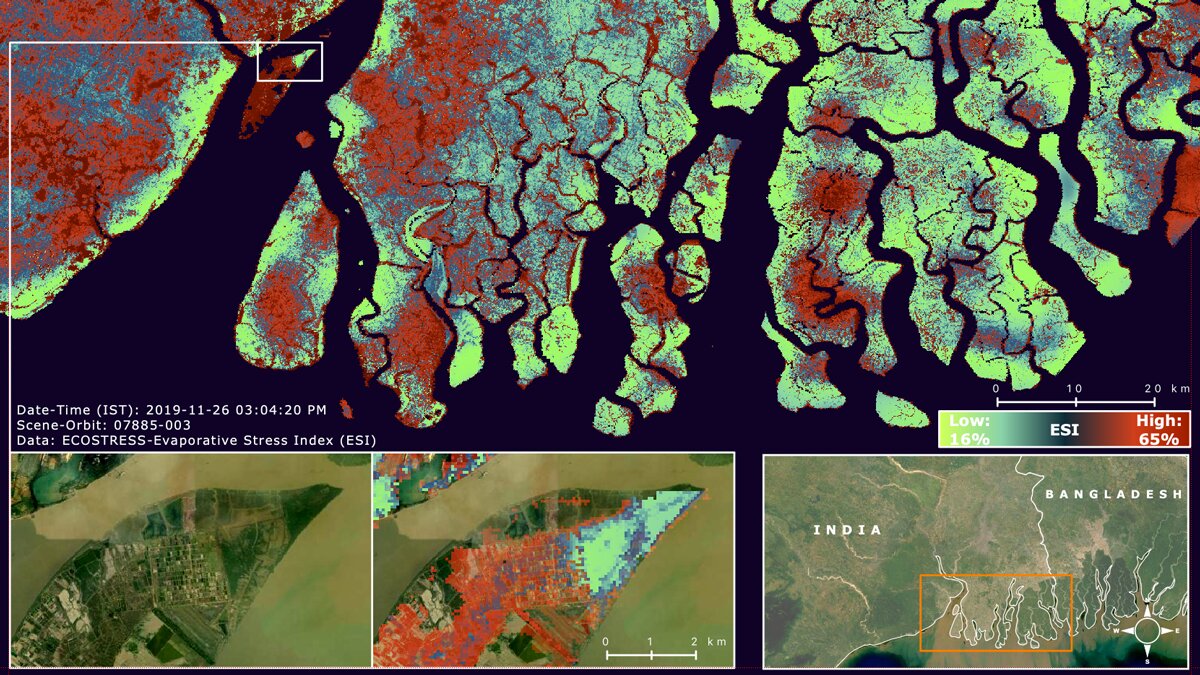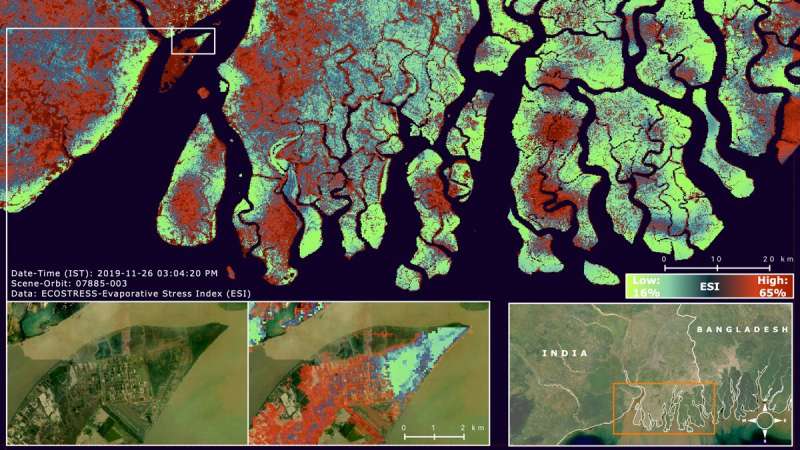

Designing instruments for spacecraft missions is an exercise in managing trade-offs. With severe restrictions on power, mass, and volume, space-based instruments are often compromised in ways an equivalent laboratory instrument would not be. Each instrument also generally supports a number of experiments or observational campaigns.
Each potential use of an instrument benefits differently from attributes such as spatial, temporal, and spectral resolution, or the signal-to-noise ratio. For instance, geologic observations may prefer high spatial and spectral resolution, whereas meteorologic experiments may require high-cadence observations and a good signal-to-noise ratio. Balancing these competing needs is a critical aspect of instrument design.
In their Journal of Geophysical Research: Biogeosciences study, Cawse-Nicholson et al. propose a new objective metric for optimizing the competing needs of instrument users, which they call intrinsic dimensionality (ID). Intrinsic dimensionality quantifies the information content in a given set of observations by essentially counting the number of significant components in a principal component analysis of the data.
To test their approach, the authors applied ID to NASA’s proposed Surface Biology and Geology spacecraft. They identified and processed spectroscopic data sets from existing sources representative of the mission’s projected capabilities. By resampling the input data in different ways, they simulated various possible instrument trade-offs, calculating the ID for each.
The study finds that intrinsic dimensionality decreases with noisier, lower-resolution observations, which is consistent with intuition. However, the scientists note that this metric can be used to quantify intuition to guide trade-offs. They find that the sample scene (e.g., desert versus forest) has some effect on the consistency of ID for spatial considerations but less for spectral ones. In the future they will apply the concept to more areas of instrument and mission design, such as data rates, flight paths, and observing schedules.
Spectral-volumetric compressed ultrafast photography simultaneously captures 5D data in a single snapshot
K. Cawse‐Nicholson et al, Intrinsic Dimensionality as a Metric for the Impact of Mission Design Parameters, Journal of Geophysical Research: Biogeosciences (2022). DOI: 10.1029/2022JG006876
Provided by
Eos
This story is republished courtesy of Eos, hosted by the American Geophysical Union. Read the original story here.
Citation:
Optimizing competing instrument needs with an objective metric (2022, August 30)
retrieved 30 August 2022
from https://phys.org/news/2022-08-optimizing-instrument-metric.html
This document is subject to copyright. Apart from any fair dealing for the purpose of private study or research, no
part may be reproduced without the written permission. The content is provided for information purposes only.

